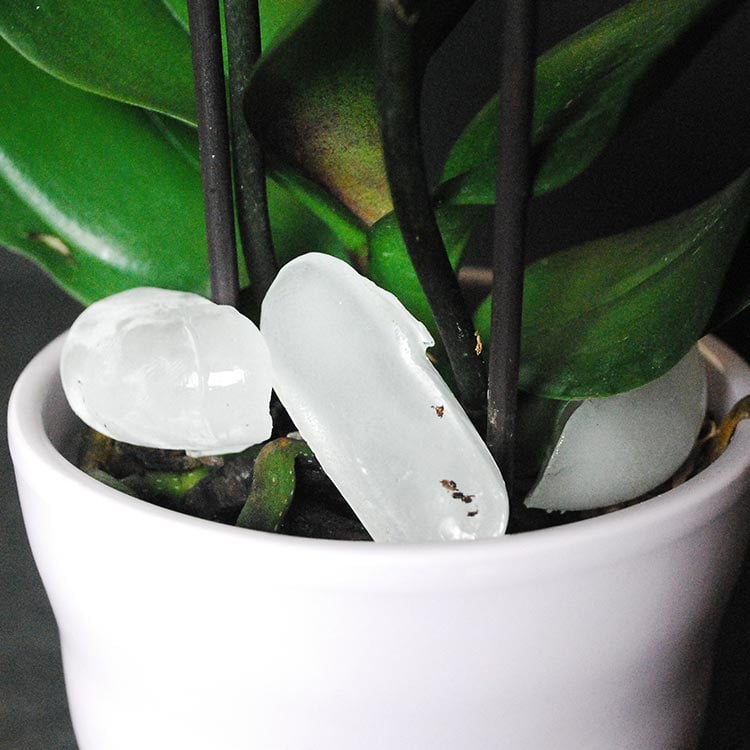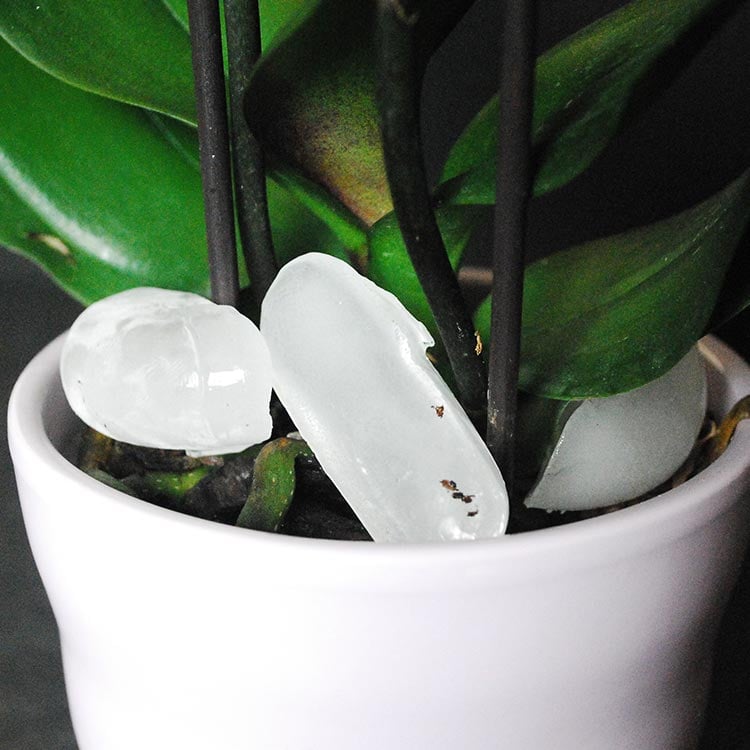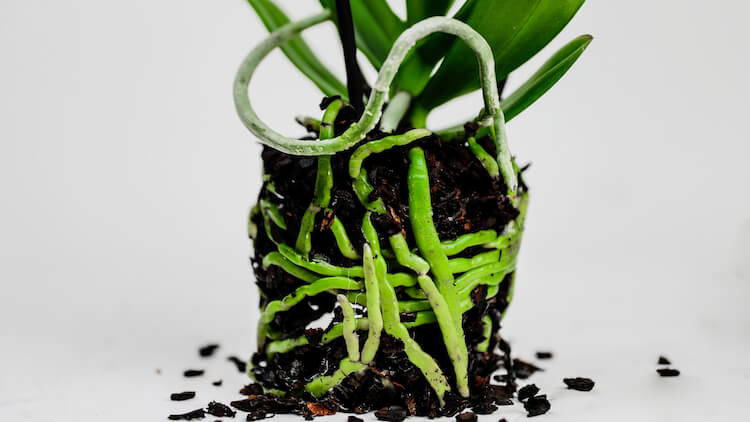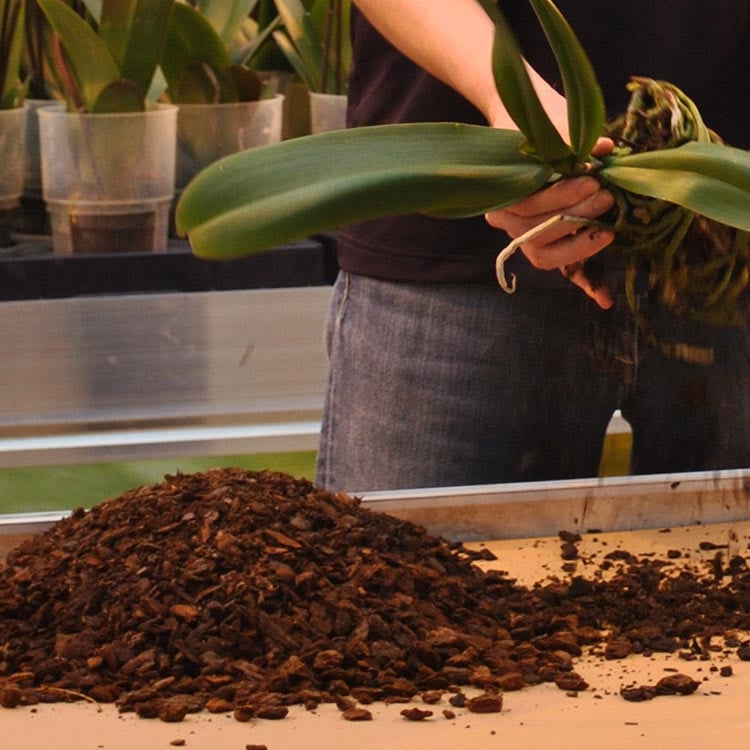
Hey there, orchid lovers! We know it can often be a struggle to take care of your plant and ensure it has exactly what it needs, especially regarding water. While watering orchids is not rocket science, it can be confusing, especially if you're new to the game. Once you understand the basics, it will become a routine as easy as brushing your teeth!
One of the most common mistakes people make when caring for orchids is overwatering. While it may be tempting to dote on your plant baby by giving it copious amounts of water, please resist the urge. Otherwise, you will drown it or contribute to rotting roots!
So, how often should you water your orchid? Well, that depends on a few things, like sun exposure, the time of year, where it’s located in your house and the temperature of your home. If it's in a humid bathroom, it will need less water than an orchid on a dry, sunny windowsill.
We recommend watering your orchid once a week. But before you grab that watering can, take a look at the soil. Is it still damp from last week's watering? If so, hold off on watering for another day or two. If the soil is dry, go ahead and give your orchid a good soak.
But what about those ice cubes you keep hearing about? When you water with ice cubes, the water melts slowly, giving your orchid a gradual, steady drink. Plus, it's super easy. Just add the correct number of ice cubes to your orchid once a week and you're good to go.
We developed and tested this approach to make watering easier for our customers, but it is optional. The most important thing is to use the correct amount of water for the size of your orchid.

If your orchid’s leaves are yellow or the roots are mushy, you may have overwatered your orchid. Trim back any brown, mushy roots using a pair of sterile scissors or a knife, being careful not to damage the healthy roots.
Let your orchid dry out for a few days before you water it again. If the leaves are yellow, this could be a sign of too much water or not enough light. Move your orchid to a brighter location and cut back on watering until the soil is completely dry.
Signs of overwatering:
Signs of under-watering:

Orchids are epiphytes, meaning that in their natural habitat, they grow on trees and absorb water and nutrients from the air, rain and debris that collect around them. Their roots are designed to absorb moisture and nutrients quickly and efficiently. In a pot, they don't have that same access to moisture and nutrients, so it's up to you to give them what they need.
In addition to avoiding overwatering your orchid, make sure your orchid has good drainage because you don’t want your orchid to sit in water. That's a recipe for disaster: orchids don’t like ‘wet feet,’ which can lead to root rot.
We make it easier to keep tabs on your orchid’s roots by placing them in clear, plastic containers inside a larger, decorative pot. All you have to do is lift the inner container out of the pot and look at the roots, ensuring they are bright green or silvery but not mushy. Is water still in the larger pot even though you watered it a week ago? Hold off a bit longer before watering it. You can also dump any extra water from the pot, so you don’t have to worry about your plant sitting in that water longer than needed.

Potting mix, also known as the growing medium, is the material in which an orchid is planted. It provides support for the roots, allows for drainage and holds moisture.
Orchids require a special type of potting mix because they are epiphytes. Instead, orchids need a porous and well-draining mix that allows air to circulate around their roots.
We’ve made repotting easy with our special orchid mix, which is a blend of sphagnum moss, bark and charcoal. This mix is designed to provide the perfect balance of moisture and air circulation for orchids.
When repotting your orchid, it's important to choose the right size pot and to use fresh potting mix. Over time, potting mix can break down and become compacted, impeding drainage and air circulation. Repotting every one to two years can help ensure that your orchid stays healthy and happy!
Orchids love to be in a humid area. After all, they are tropical plants! In the wild, they grow in the dappled shade of trees, where the air is moist but not stagnant. Avoid getting water on the leaves and flowers, though, as this can cause damage.
To replicate a tropical environment, place a tray of water near your orchid or use a humidifier to add moisture to the air during the drier months, especially during colder months when dry heat is coming out of vents. (Be sure to keep your plant away from vents or close the vent.) You can also place your orchid in a bathroom for some added humidity, as long as it is in the correct lighting conditions.
Speaking of air circulation, it's important to give your orchid plenty of breathing room. Don't overcrowd it with other plants or decorations; this can limit airflow and make it more difficult for your orchid to absorb moisture and nutrients.
What about those times when you're away from home for a few days or even weeks? Fear not! There are a few tricks you can use to keep your orchid alive and well while you're gone. One option is to create a self-watering system using a wick or a watering bulb. Simply fill a container with water and place the wick or bulb in the container. Then, insert the wick or bulb into the soil. The water will gradually seep into the soil, keeping your orchid hydrated.
Another option is to soak your orchid in water before you leave. Fill a container or sink with room temperature water and submerge your orchid for about 10-15 minutes. Then, let it drain completely before you put it back in its pot. This should give your orchid enough moisture to last at least a week.
If you suspect that your orchid is overwatered, it's important to let the potting mix dry out before watering again. If it's underwatered, give it a good drink of water and adjust your watering schedule as needed. It's always better to err on the side of underwatering, as orchids can tolerate being a bit on the dry side more than they can tolerate being overly wet.
As a general rule, water your orchid once a week with the recommended amount of water for your orchid’s size. This ensures that they receive enough moisture to thrive without becoming waterlogged.
Check the potting mix before watering. You can do this by sticking your finger about an inch into the mix. If it's dry, it's time to water your orchid.
Water in the morning. This allows your orchid to absorb moisture throughout the day, which is beneficial for its growth and overall health.
Avoid letting the orchid sit in standing water. This can lead to root rot. If using a clear container inside another pot, be sure to dump out any excess water in the outside pot if it’s still there the day after watering.
While orchids may look high maintenance, they are relatively easy to care for and can provide years of beauty and enjoyment.
It's easy to get caught up in the technicalities of care but remember to step back and enjoy the beauty of your orchid! Your orchid is a living work of art, featuring stunning colors and unique shapes. With the right care, it will reward you with beautiful blooms for years to come.


Copyright Just Add Ice® Orchids 2023